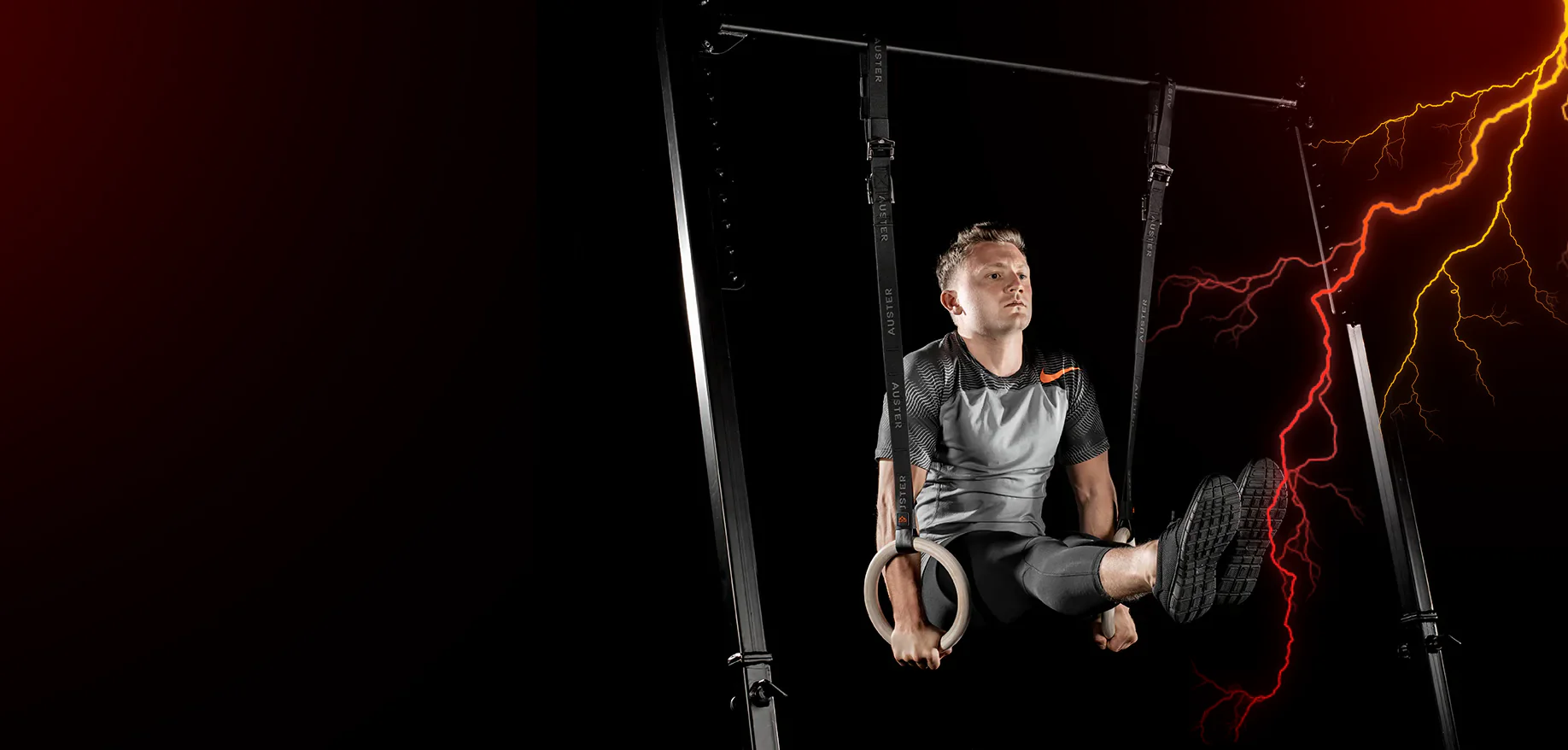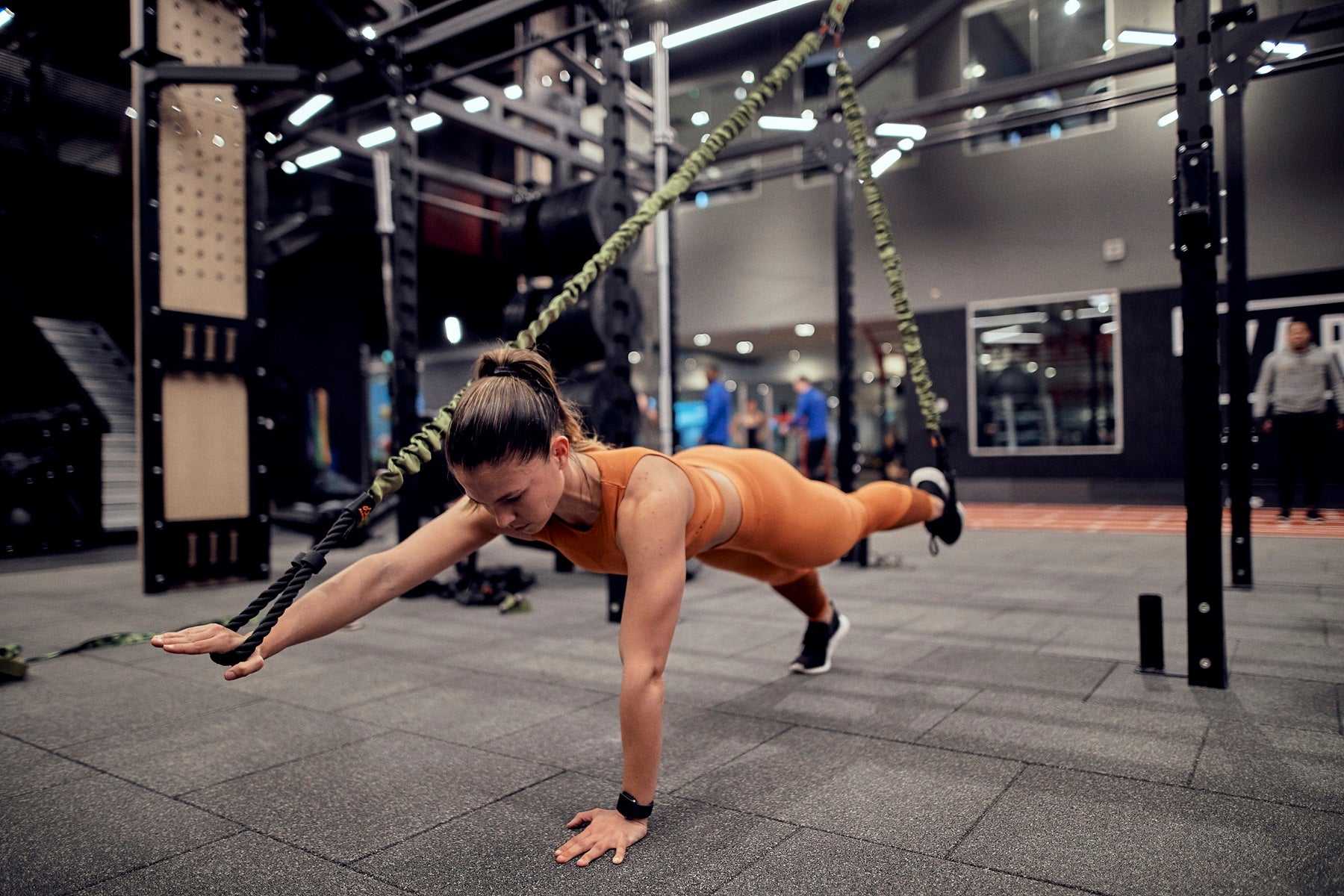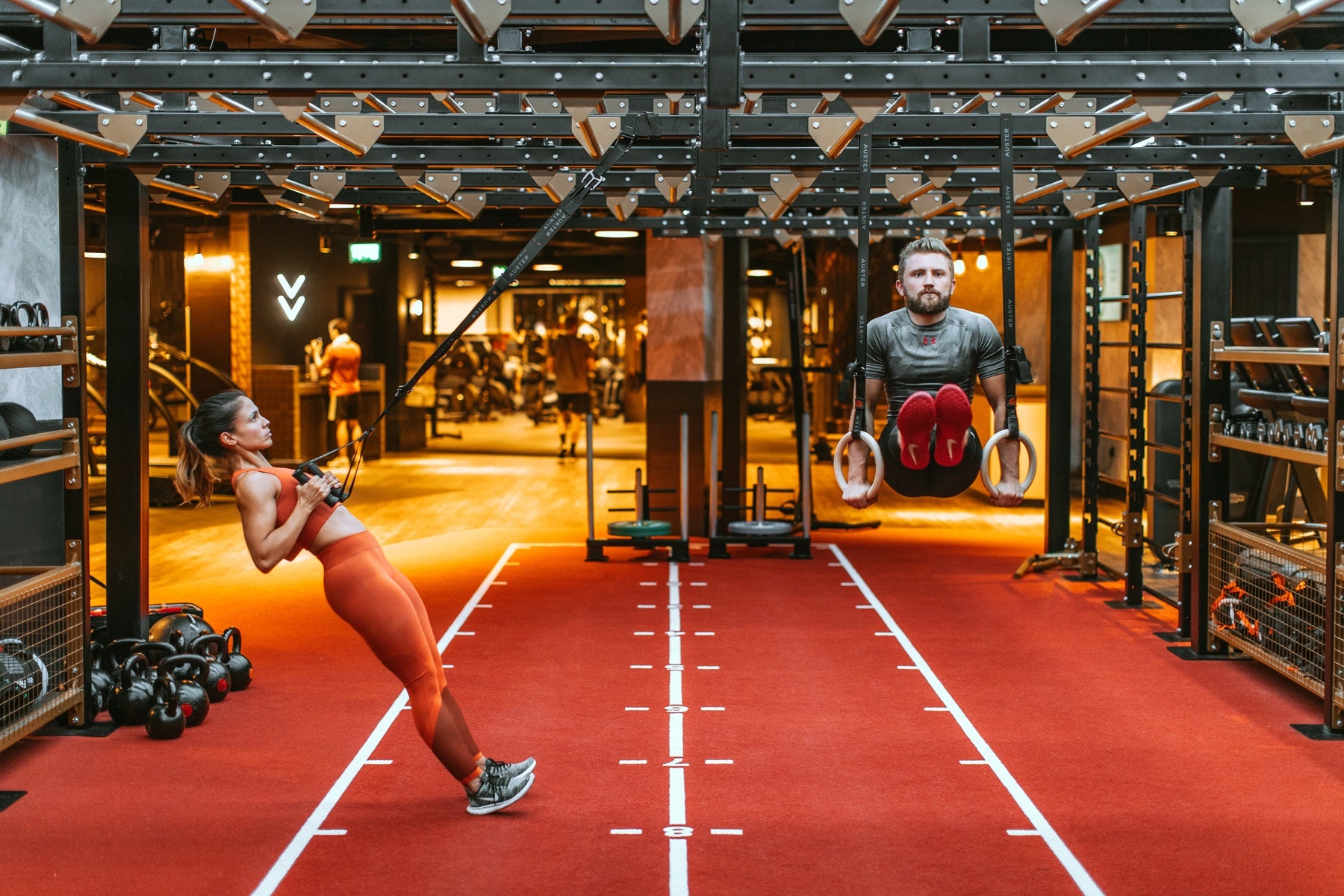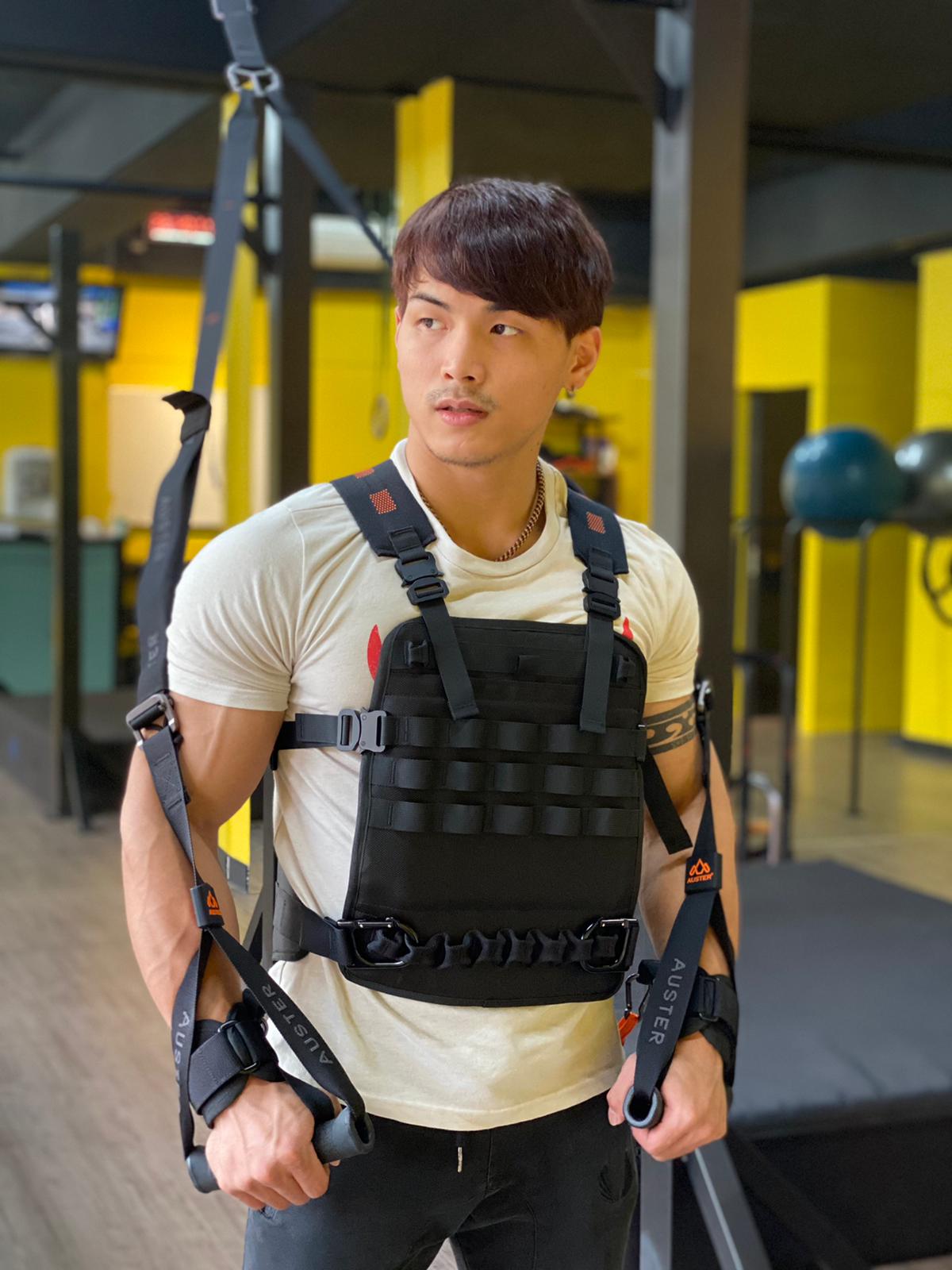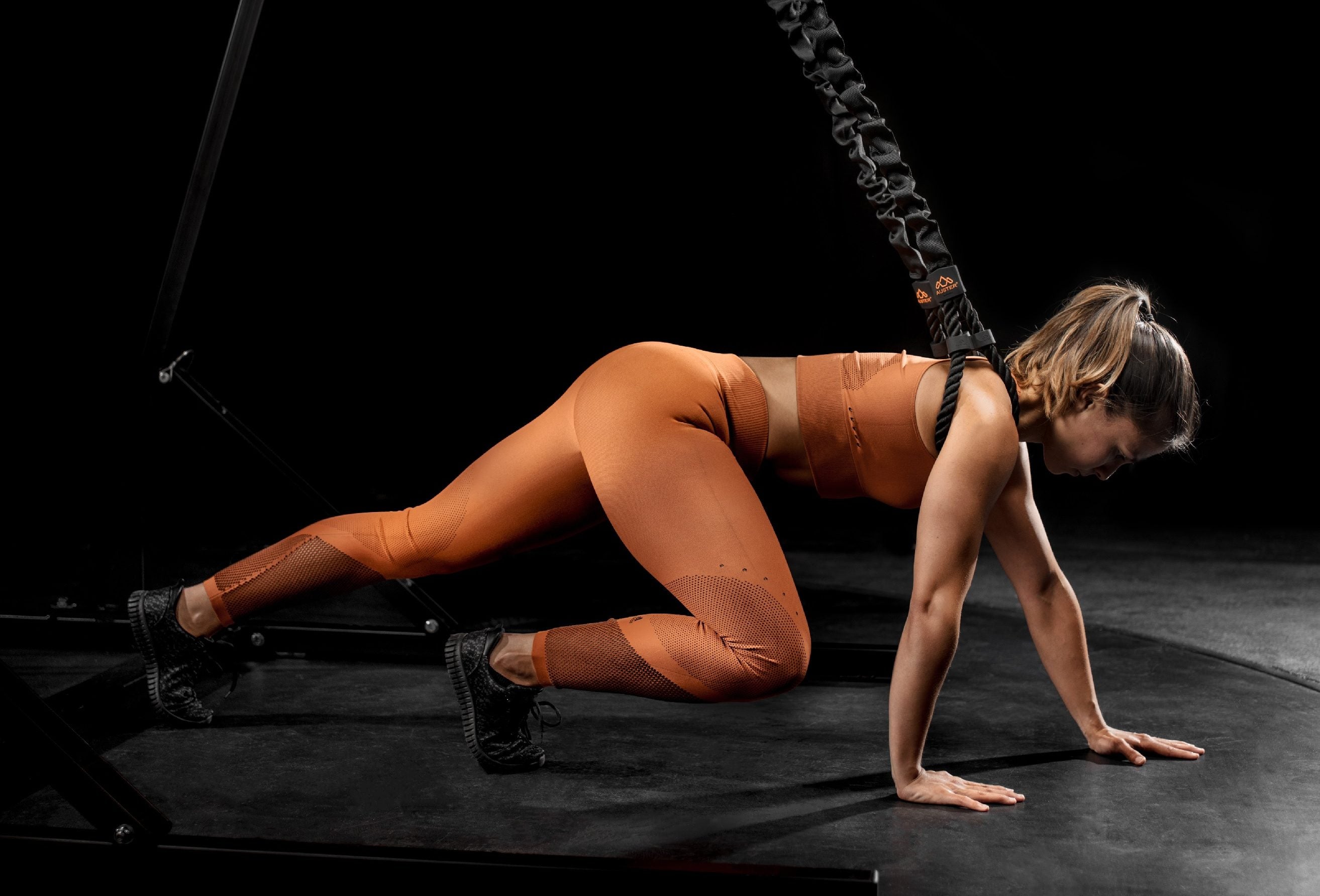
How to increase the difficulty of the Bear Crawl
The Bear crawl is a fun and interesting exercise to train the whole body. It is a staple Animal Flow move, and the Bear crawl is a simple progression from how we used to crawl as babies. It requires a lot of stability and strength from the toes, knees and hips. Continuing all the way through the core and scapula to the shoulders, elbows and wrists. The exercise is best performed slowly to ensure correct technique and to increase the time under tension throughout the movement. However, many people quickly find the exercise not challenging enough. Here’s how to increase the difficulty of the Bear crawl using our Dynamic Bands.
The Dynamic Bands can be used to assist or resist almost any exercise, see here for more tips and tricks using them.
Resisted Bear crawls using Dynamic Bands
The Dynamic Bands are resistance bands with a soft rope handle. The rope handle comes with a rubber slide to secure onto you. There are two methods to secure the Dynamic Bands to add resistance to the Bear crawl.
Slide the handles up your arm and secure onto your shoulders
This method is very simple: simply attach the Dynamic Bands to the Dual-Carabiner, face away from the anchor and slide the handles up to your shoulders.
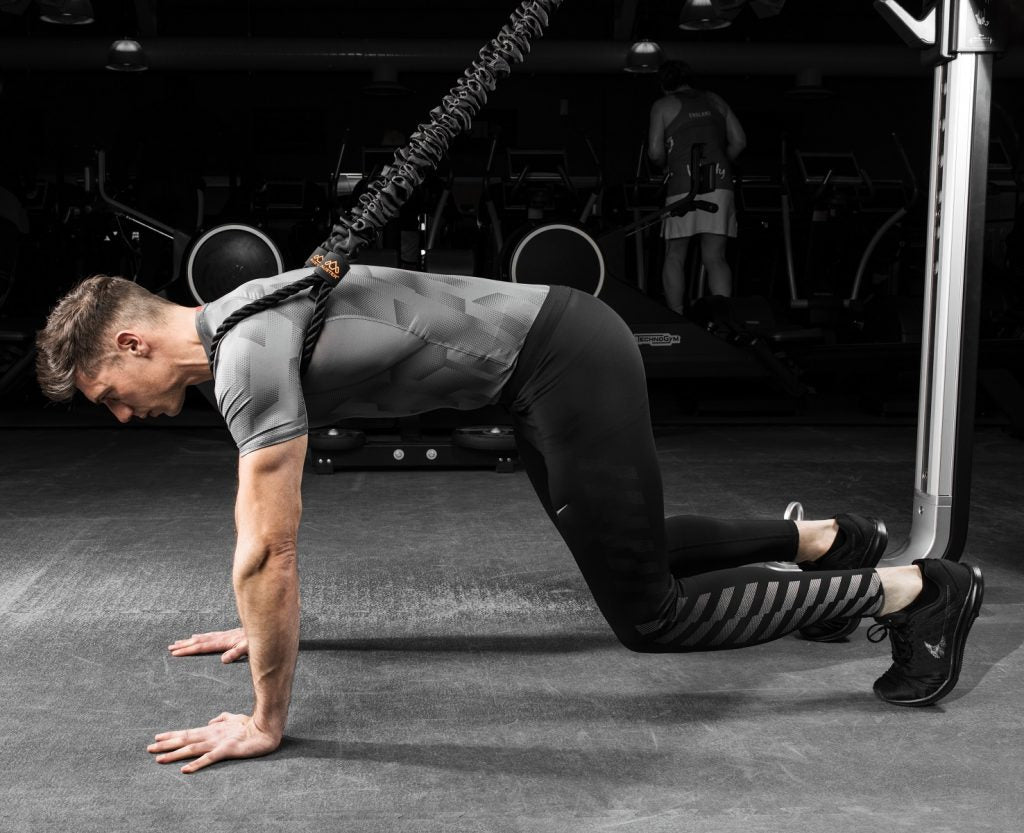
Connect the Dynamic Bands together and wrap around your waist
The handles of the bands can be knotted together to create one long band, see here for a guide on how to do it. Then the bands can comfortably rest around your waist throughout the exercise.
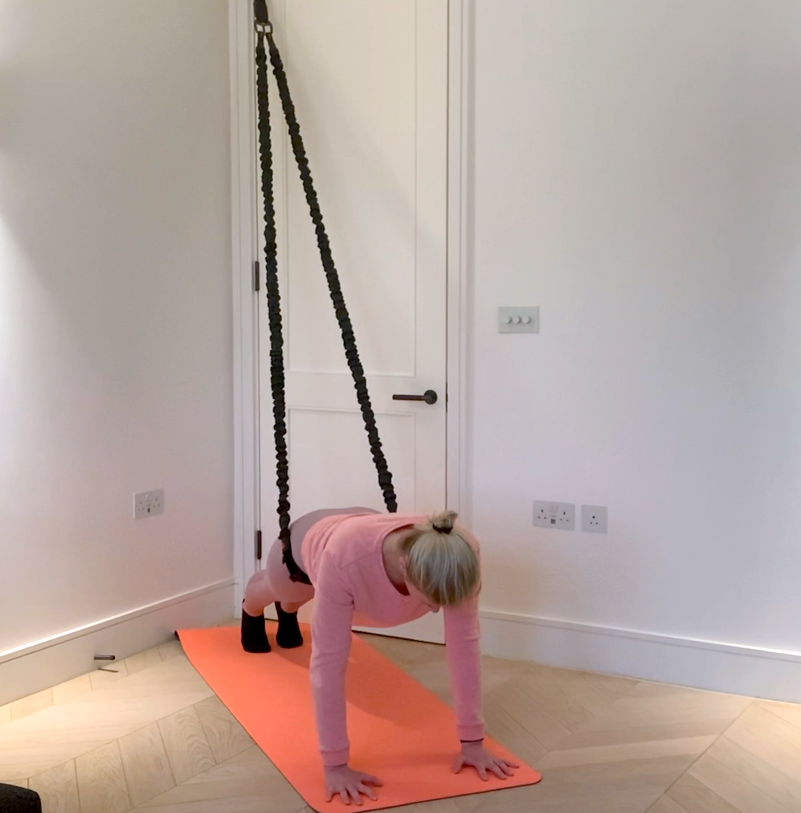
How to do the Bear crawl
Once you have secured the bands around your body, face away from the anchor point and kneel on all fours.
Raise your knees off the ground slightly, ensuring to maintain a flat back.
Take a small step forward with one leg, bringing the opposite arm forward at the same time.
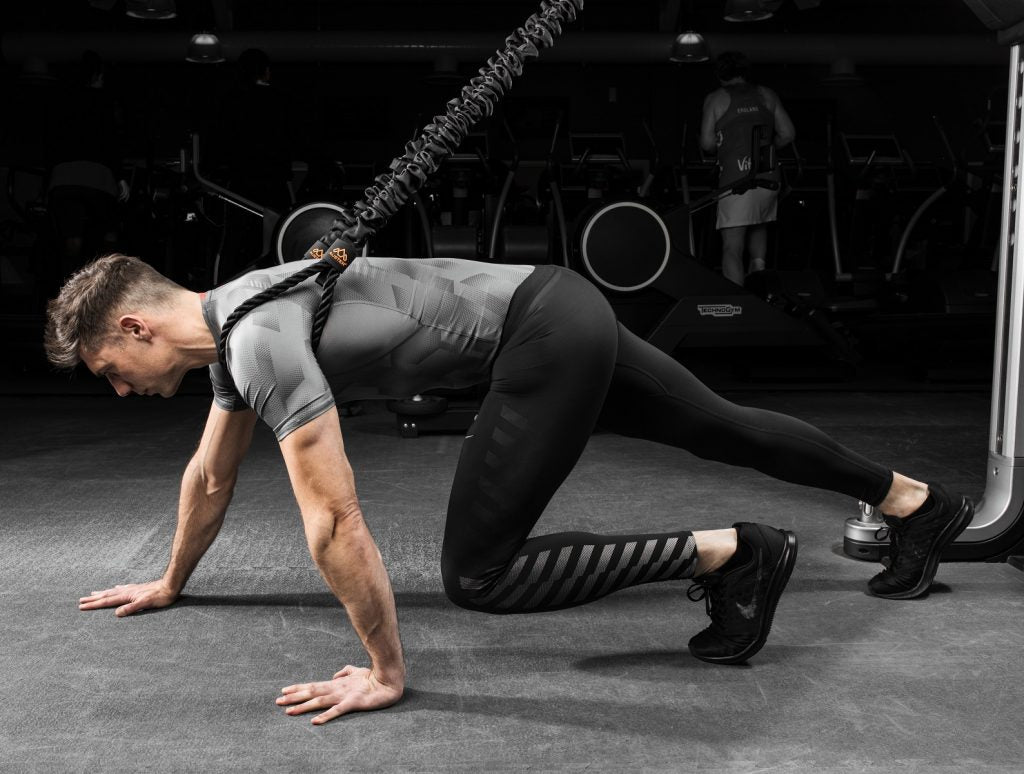
Push yourself forward, lifting the opposing arm and leg and placing forward. Ensure to move slowly, keeping your core stable and minimising body-roll.
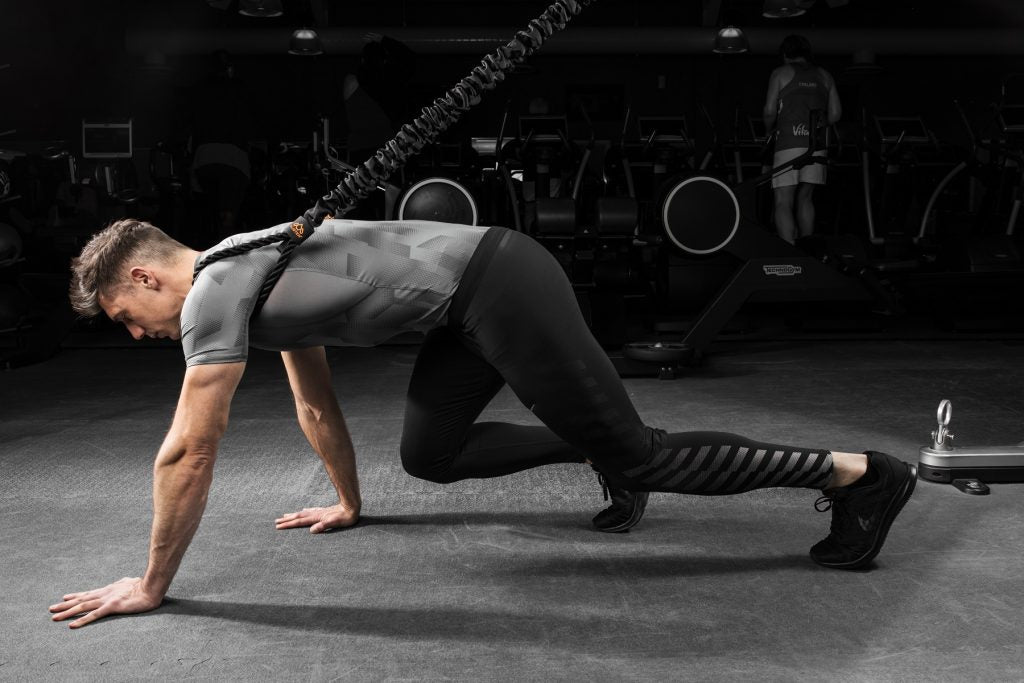
Walk out as far as the bands can extend, then reverse the movement back to the start point. Then carry on going forward and backwards as many times as necessary – ensuring form does not begin to breakdown.

